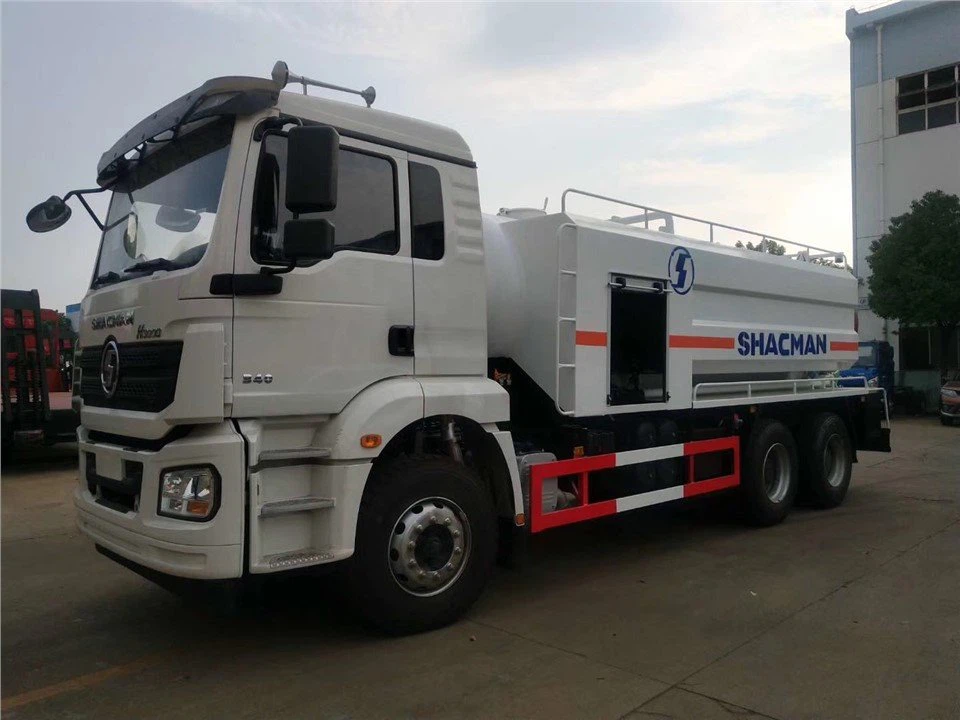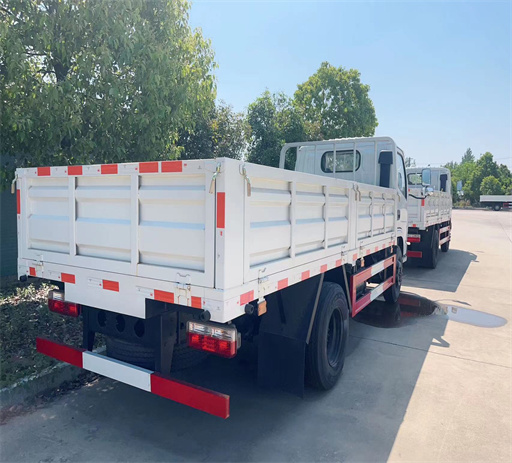Bogie Suspension in Trucks: A Comprehensive Guide

Introduction
Bogie suspension systems are vital components in the design of modern trucks, particularly for those used in heavy-duty applications. Unlike conventional suspension systems, bogie suspensions offer enhanced stability, improved load distribution, and increased comfort, making them ideal for transporting heavy loads over various terrains. This article delves deep into the workings of bogie suspension systems in trucks, exploring their types, benefits, maintenance tips, and more. Whether you’re a truck owner, operator, or simply interested in automotive engineering, this guide will provide you with valuable insights into bogie suspension systems.
What is Bogie Suspension?
Bogie suspension refers to a type of suspension system commonly used in vehicles designed to carry heavy loads, including trucks and trailers. The term “bogie” typically refers to a wheeled platform or assembly designed to support the weight of the vehicle and provide stability while in motion. The key distinguishing feature of bogie suspension is the use of multiple axles and wheels, which enhances weight distribution and enables the vehicle to navigate challenging terrains.
History of Bogie Suspension in Trucks
The concept of bogie suspension originated in the railway industry, where it was used to improve the stability and handling of trains. Its successful application in rail transport paved the way for its adoption in trucking and heavy-duty vehicles. Over the decades, advancements in engineering and materials have further refined bogie suspension systems, making them more efficient and reliable.
Types of Bogie Suspension Systems
There are several types of bogie suspension systems employed in trucks. Each type has its unique advantages and drawbacks, making them suitable for different applications.
1. Leaf Spring Bogie Suspension
Leaf spring bogie suspension is one of the most common types used in trucks. It typically consists of several steel leaf springs stacked together to absorb shocks and distribute loads evenly.

- Advantages: Simple design, low cost, and reliable performance.
- Disadvantages: Limited shock absorption compared to other systems, which may affect ride comfort.
2. Air Suspension Bogie
Air suspension bogies utilize air-filled bags instead of traditional springs to provide a smoother ride. This system automatically adjusts the air pressure based on the load, maintaining consistent ground clearance.
- Advantages: Superior comfort, better load leveling, and enhanced traction on varied terrains.
- Disadvantages: Higher maintenance costs and complexity in repairs.
3. Coil Spring Bogie Suspension

Coil spring bogies use helical coils to absorb shocks. This type is less common but can provide improved handling and comfort over uneven surfaces.
- Advantages: Responsive handling and better articulation.
- Disadvantages: More susceptible to wear and tear compared to leaf springs.
4. Independent Bogie Suspension
Independent bogie suspension features separate suspension components for each wheel. This design improves traction and handling, especially in off-road conditions.
- Advantages: Enhanced stability and traction.
- Disadvantages: More expensive and complex installation.
Benefits of Bogie Suspension in Trucks
The adoption of bogie suspension systems in trucks offers numerous advantages, making them a preferred choice for many operators.
1. Improved Stability
Bogie suspension systems provide enhanced stability, particularly when navigating sharp turns or uneven surfaces. The distribution of weight across multiple axles helps lower the risk of tipping.
2. Load Distribution
With multiple axles, bogie suspensions allow for better load distribution, reducing the wear on individual tires and components. This can result in lower maintenance costs over time.
3. Enhanced Ride Comfort
Especially in air suspension systems, drivers and passengers experience a smoother ride with less impact from bumps and road imperfections.
4. Increased Traction
The design of bogie suspension systems enables better traction on varied terrains, making trucks more capable in off-road conditions.
5. Durability
When properly maintained, bogie suspension systems tend to last longer under heavy loads compared to traditional single-axle suspensions, leading to better long-term value.
Disadvantages of Bogie Suspension
Despite their benefits, bogie suspensions also come with drawbacks. Understanding these can help truck operators make informed decisions.
1. Higher Initial Cost
Investment in trucks equipped with bogie suspension can be higher than those with standard suspensions. However, many operators find that the benefits justifying the expense.
2. Complexity in Repairs
Maintaining and repairing bogie suspension systems, especially air suspension, may require specialized knowledge and tools, which can increase service costs.
3. Weight
Bogie systems can add additional weight to trucks. This is a consideration for payload capacity, particularly in load-sensitive applications.
Maintenance Tips for Bogie Suspension
Proper maintenance is crucial to ensure the optimal performance and longevity of bogie suspension systems. Here are some practical tips:
1. Regular Inspections
Conduct regular inspections for signs of wear, damage, or corrosion. Pay special attention to components such as air bags, leaf springs, and shock absorbers.
2. Monitor Tire Pressure
Keep tire pressure at recommended levels to ensure even weight distribution and avoid unnecessary strain on the suspension system.
3. Lubrication
Regularly lubricate moving parts to reduce friction and wear. Follow manufacturer recommendations regarding lubricant types and intervals.
4. Load Management
Distribute loads evenly across the axles to prevent overloading and reduce wear on the bogie suspension components.
5. Professional Servicing
Seek professional services for comprehensive suspension checks, particularly if you notice any performance issues or changes in handling.
Real-World Applications of Bogie Suspension in Trucks
Bogie suspension is widely used in a variety of trucking applications, enhancing performance in each instance.
1. Heavy-Duty Hauling
Trucks used for transporting heavy materials, such as construction equipment, benefit significantly from bogie suspensions, allowing for safer and smoother rides.
2. Off-Road Applications
Trucks designed for off-road conditions, such as logging or mining, utilize bogie suspensions to provide the traction and stability needed to navigate challenging environments.
3. Long-Distance Transportation
Companies engaged in long-haul trucking utilize vehicles with bogie suspensions for enhanced ride comfort, translating to reduced driver fatigue during long distances.
Case Studies: Successful Implementation of Bogie Suspension
Here are a few examples of how particular companies or vehicles benefited from the use of bogie suspension:
1. XYZ Logistics Company
XYZ Logistics upgraded their fleet to include trucks with air ride bogie suspension. As a result, they experienced a 20% decrease in cargo damage and improved customer satisfaction due to timely deliveries.
2. ABC Construction
ABC Construction incorporated bogie suspensions into their fleet for transporting heavy machinery. This reduced tire wear significantly and lowered maintenance costs by 15% within the first year.
Frequently Asked Questions (FAQs)
1. What is the difference between bogie suspension and conventional suspension?
Bogie suspension involves multiple axles providing better weight distribution and stability, while conventional suspension typically has a single axle per wheel.
2. How do I know if my truck needs suspension maintenance?
Look for signs like unusual noises, fluctuating ride height, uneven tire wear, or decreased handling performance.
3. Can I convert my truck to a bogie suspension system?
Conversion is possible, but it can be costly and requires significant technical knowledge. Consulting a professional is recommended.
4. How often should I inspect my bogie suspension?

It is advisable to inspect at least every year or more frequently if you are operating in heavy-duty or off-road conditions.
5. What are the most common problems with bogie suspension systems?
Common issues include air bag leaks in air suspension, wear on leaf springs, and general fatigue in suspension components due to load stress.
6. Are bogie suspensions suitable for all types of trucks?
While bogie suspensions are beneficial for heavy-duty and specialized vehicles, they may not be necessary for light-duty trucks where cost and weight are more significant concerns.
